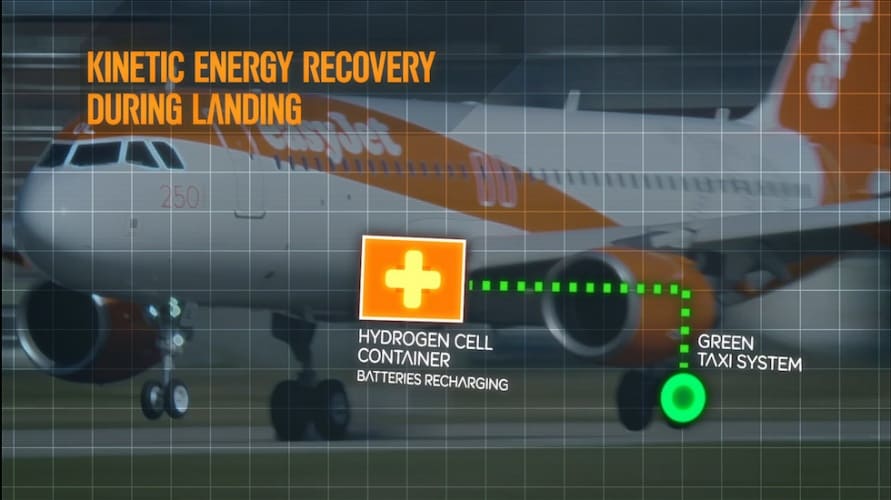
The zero emissions hydrogen fuel system is part of the airline’s environmental ambitions to slash fleet CO2 emissions per passenger kilometre by 7%. Set for implementation by 2020, the airline currently clocks up 81.05g of CO2 per passenger kilometre.
For the hybrid plane concept the airline looked to students at Cranfield University, who were asked to develop concepts that could come to fruition in 20 years time. Beating this timeframe by some margin, easyJet will now set to work with its industry partners and suppliers to apply the technology and test it later this year.
The hybrid plane concept uses a hydrogen fuel cell stowed in the aircraft's hold. This system allows energy to be captured as the aircraft brakes on landing and is used to charge the system’s lightweight batteries when the aircraft is on the ground.
The energy can then be used by the aircraft without having to use its jet engines. This would be particularly beneficial during taxiing, given that the airline’s aircraft average 20 minutes of taxi time per flight, and the procedure itself accounts for 4% of the company’s annual fuel consumption.
Each aircraft would have motors in their main wheels and power electronics and system controllers would give pilots total control of the aircraft’s speed, direction and braking during taxi operations. The system would also reduce, if not remove altogether, the need for tugs to manoeuvre aircraft in and out of stands.
Wastewater from the fuel cells could then be used to refill the aircraft’s water system throughout the flight.
Ian Davies, easyJet’s engineering director said: “The hybrid plane concept we are announcing today is both a vision of the future and a challenge to our partners and suppliers to continue to push the boundaries towards reducing our carbon emissions.
“It’s also a great example of the benefits of our strategic relationship with Cranfield University.”
Dr Craig Lawson, lecturer, Centre for Aeronautics, Cranfield University, added: “Our students have showcased some exciting ideas for the 2035 vision of the airline industry through The Future of Flight competition, presenting environmental solutions, operational improvements and ideas to enhance the customer experience. We’re looking forward to developing this concept further.”
EasyJet and Cranfield University signed a three year strategic partnership agreement last year to share innovation and knowledge.
As part of easyJet’s 20th birthday activities, students at Cranfield University were asked to compete in four categories; cabin design, aircraft design, airport experience and in-flight experience.
Judges at easyJet and Cranfield received several advanced concepts, including dynamic wings which change shape in flight, a 'shark skin' coating to reduce surface drag and, in the cabin, ultra-light weight seats carbon fibre seats incorporating wireless phone and tablet charging panels.




Project to investigate hybrid approach to titanium manufacturing
Sadly they will not be ordering any more presses from Wilkins & Mitchell http://www.historywebsite.co.uk/articles/Darlaston/WM.htm